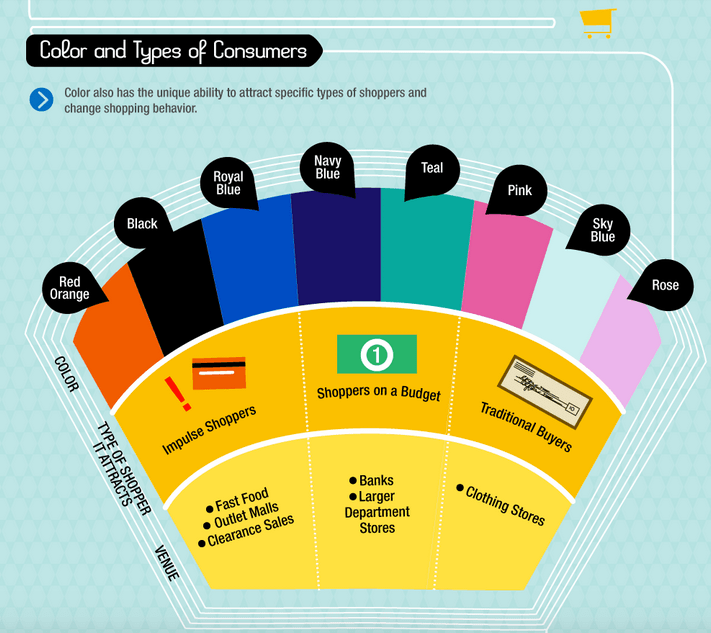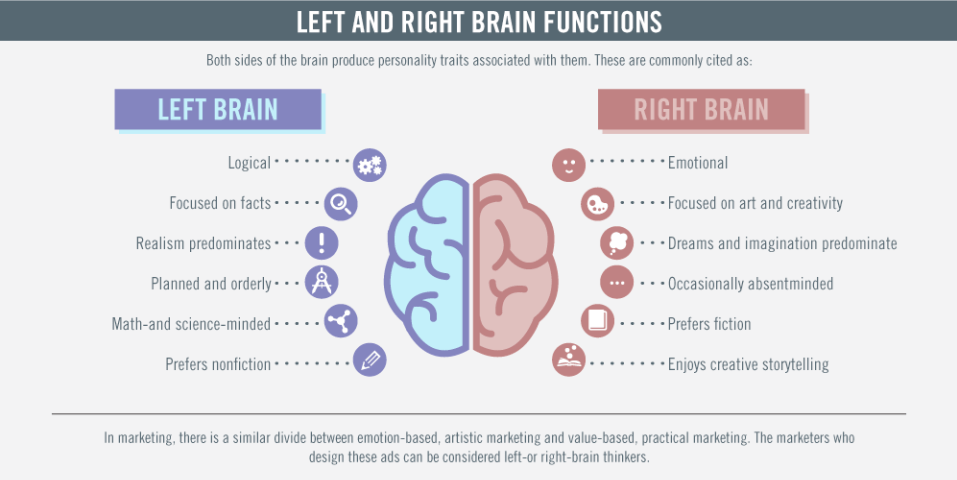Wouldn’t it be nice to get inside the head of your potential customers to see what really makes them tick? If you could somehow tap into the psychological and neurological triggers that convert people from browsers into buyers, think about how valuable that could be to your business. Well, luckily for us marketers, retailers, and E-commerce business owners, science has been hard at work trying to figure out how the brain reacts when exposed to certain types of marketing messages and advertisements.
In this post, we’ll take a look at how our brains read, process, and react to marketing messages. From there, we’ll come up with a few ways to put this information into action and help boost your online sales using marketing psychology.
This is Your Brain on Marketing: Any Questions?
The explicit study and use of psychology in advertising dates back to the late 1800’s. In 1895, University of Minnesota psychology professor Harlow Gale sent out a questionnaire to local businesses with the goal of learning how people process ads. Gale’s studies on the effects of psychology in advertising helped to pave the way for future works by folks like Walter Dill Scott (The Theory and Practice of Advertising), Harry Hollingworth, and John B. Watson (Psychology as the Behaviorist Views It).

In 1984, Dr. Robert Cialdini authored what many consider to be the definitive guide to marketing psychology – Influence: The Psychology of Persuasion. Dr. Cialdini’s theory focuses on 6 main principles of marketing influence:
- Reciprocity
- Commitment & Consistency
- Social Proof
- Authority
- Liking
- Scarcity
You can see Cialdini’s principles at play in everything from free samples, sales and discounts, blogging, product reviews, brand philanthropy, and limited time offers.
All of this interest and work in how the brain reacts to marketing messages has given rise to a new field of scientific study: Neuromarketing. Basically, neuromarketing researchers use machines to measure brain activity when a person is exposed to marketing stimuli. This data is then used by brands like Google, Coca Cola, and CBS to predict consumer behavior and adjust their marketing efforts accordingly.
Even if you’re not a mega brand like those mentioned above, you can still capitalize on all of this marketing pyschology data. But where should you start?
Left Brain vs. Right Brain: Hit ‘Em with Logic or Cater to Their Emotions?
Of all the science and information we have about the brain and how it reacts to marketing, perhaps the most popular is the theory of left brain and right brain thinking. The theory goes like this: “left-brained” people tend to be more logical, objective, and analytical. “Right-brained” folks are more emotional, intuitive, and subjective when it comes to making decisions.
While the validity of the left brain, right brain theory has been debated by the psychology community, you can still look to the theory’s basic principles when crafting your E-commerce marketing messages. Consider the following aspects of your business:
- Your Industry – Is your industry well-establish or up and coming? What types of messages and marketing approaches have worked well in the past? Does your industry lend itself more to hard numbers and facts, or does creative storytelling work best?
- Your Products or Services – Can you present your product or service in a way that appeals to both left brain and right brain thinkers? How would you make insurance policies appeal to right-brained customers? Could you sell adventure travel packages to analytical left-brained shoppers?
- Your Buyer Personas – Know who your customers are! Ask them questions, send out surveys, and do follow-up interviews. Why did they buy from you in the first place? Is it because you logically explained all of the benefits, or was it because of your creative and personal approach on social media?
- Your Buyer’s Journey – Are your buyers still figuring out their pain points, or are they ready to make a buying decision? Do they want to read user reviews, download your eBook, or see pricing comparisons?
For more on left brain vs. right brain marketing, check out this awesome infographic on Marketo’s blog.
Turning Science into Sales: Applying Marketing Pyschology to Your Online Strategy
Now that you know a bit about the history and science behind marketing pyschology, it’s time to put some of it in action to help boost your online sales. Here are a few psychological tactics you can test out in your current marketing efforts:
- Be Smart with Colors – You’re probably familiar with the basics behind using color to communicate a certain message. Black communicates power and intelligence. Red is the color of passion and catches people’s attention. Green signifies growth, nature, and wealth. Color psychology goes a lot deeper than this, though, and can be used to attract certain types of shoppers (impulse buyers, bargain hunters, etc.), as well as shoppers at different stages in the buying cycle.Check out this infographic by KISSmetrics that outlines some of the ways that colors affect purchases, and see how you can switch up your site’s color scheme to attract and close the type of customers you’re looking for.

- Choose Your Words Wisely – “Join Us” or “Sign Up?” “Buy Now” or “Purchase?” Do you know which of these phrases converts best for your customers and products? As a marketer or E-commmerce business owner, you know the power that words can have when it comes to persuasion. But do you know which words and phrases hold the most sway over your potential customers?Buffer put together a comprehensive list of 189 words that convert. As a starting point, why not try implementing the 5 most persuasive words in the English language throughout your web copy, product descriptions, and marketing messages.

- Go All-In with Visuals – Humans are visual creatures. In fact, about 90% of the transmitted information in the human brain is visual. This makes sense, considering that our brains process images about 60,000 times faster than words. Maximize your use of images – on your website, on product pages, in your email marketing efforts, in your content creation – while keeping visuals contextually relevant and on-brand.
- Give and Thou Shalt Receive – Going back to Dr. Cialdini’s 6 principles of influence, you’ll notice the first one he listed is ‘Reciprocity.’ Humans are generally inclined to return favors or otherwise respond to a positive action with another positive action. Tap into this by offering free shipping, occasional discounts, or other sales incentives. Keep in mind, though, that the ‘favors’ you provide to your customers don’t always have to be directly tied to a purchase. You should also be providing relevant, useful content and other free resources to site visitors as part of a larger E-commerce inbound marketing strategy. Not only will this foster goodwill between you and your target audience, it will also help to position you as a thought leader in your industry.
- Don’t Overwhelm with Options – Next time you go to the grocery store, check out the cereal isle. Feel overwhelmed? That’s how your customers can feel if you give them too many options to choose from. Yes, having choices is a good thing. But there’s a fine line between freedom of choice and being paralyzed by a flood of options. In situations where we feel overwhelmed by too many choices, we’ll often ‘choose not to choose’ in order to avoid making the wrong choice.

Help your customers get over their fear of making the wrong choice by limiting their buying options. While there isn’t necessarily an establish ‘magic number’ of choices that will increase your sales numbers – rather than hurt them – this article on SocialTriggers.com says the sweet spot falls between 1-6 choices.
Conclusion
Some decisions are rooted firmly in the logical, analytical left brain. Others come from the more intuitive, emotional right brain. And some fall somewhere in the middle. Depending on your product, your buyer, and a whole host of other variables, you may need to adjust your marketing messages to speak directly to the decision-making part of the brain at a particular time.
Use what we’ve learned in this article to test out different marketing psychology techniques to find what works best for your brand, your industry, your products, and your customers. The key is to always keep testing. Refine your messaging, implement new psychology triggers, and watch your E-commerce sales numbers closely.

